Petals of Joy
"Petals of Joy - Facilitating Children’s Learning through a Perfume Making Activity"• Agape Little Uni @ CCK 789
Background of Activity

The children at Agape Little Uni focus on an inquiry topic every term for their investigations through the inquiry-based approach. In Term 3, the given inquiry topic was “Materials”, where children find out more about the uses of common materials around them. For this topic, the N2 children were interested to find out how to use their favourite flower petals as raw materials to create their own signature perfume.
Objectives
this activity, children were given opportunities to:
● use their sense of smell to explore different flowers;● follow simple instructions to create their floral perfume; and● show appreciation to their loved ones.
Stages of the Activity
An inquiry-based approach supports an integrated approach to teaching and learning in which children learn as they build on their earlier experiences and make meaningful connections between their previous and new learning. The five steps involved were mainly, “Ask, Investigate, Create, Discuss and Reflect,” which is further illustrated in the diagram below.
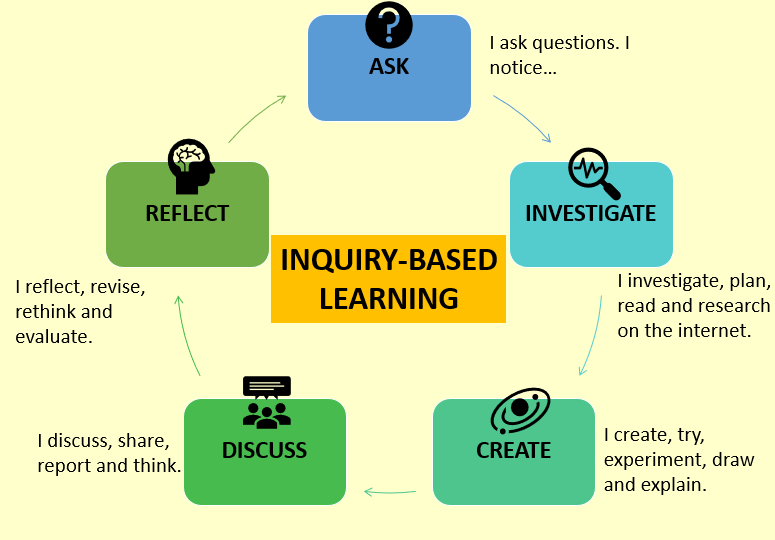
Inquiry-Based Learning Approach at Agape Little Uni
To meet the readiness levels of the N2 children who were just beginning to familiarise themselves with the inquiry-based approach, the teacher focused the children’s exploration in the “Ask” and “Investigate” stages and provided strong scaffolding for children’s learning in the other stages.
ASK
At the start of the activity, the teacher directed the children to explore a variety of objects made of different materials placed on the provocation table set up in the classroom. The objects consisted of flowers, leaves, metal ruler, pencil, stones, plastic bag, cloth, soil and water. As the children explored the different objects, the teacher engaged the children in conversations based on their observations.
Child A: Is the flower real? Can I bring it home for my mummy?
Teacher: Yes, the flower is real. You can’t bring it home for your mummy because we need it for class. Do you know what are the uses of flowers?
Child B: We can use the flowers to make tea or create a flower card.
Child C: We can also make a flower perfume!
After a few rounds of voting, the class agreed to explore the use of flowers in creating perfumes. Since “Mother’s Day” was around the corner, some of the children suggested to present the perfume as a gift for their mother.
To set the stage for children’s perfume-making which would involve their sense of smell, the teacher read a book titled, “Such A Sweet Smell” to introduce the sense of smell to the children.
INVESTIGATE
The “Investigate” phase provides opportunities for children to find out more about their topic of interest. After reading the book where the children learnt more about their sense of smell, the teacher scaffolded children’s experience by providing opportunities for them to find out more about flowers using their senses.
A table consisting of different types of flowers and tools like scissors and magnifying glasses was set up as shown in the photo below. The teacher brought the children’s attention to the importance of exploring the flowers with their five senses, in particular their sense of smell. The children were guided to observe the flowers and note its texture, size, scent and colour through questions such as, “Which flower do you like?”, “What does it smell like?”, “How does it feel like?” “Which flower do you think your mother would like? Why?”
As the children wanted to create the floral perfumes as gifts for Mother’s Day, the questions were intentionally asked to connect children’s exploration with their knowledge of their mother’s preferences. By doing so, they could create the perfume with their mothers in mind, thereby meaningfully showing appreciation to their mother.
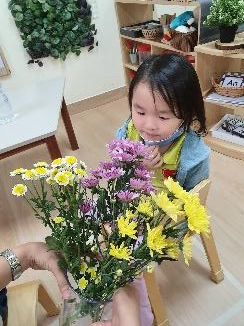
CREATE
Based on their earlier exploration, the children chose the flowers with which they would create the perfume. The teacher set up stations for the children to create their own perfume in a step-by-step manner. Through this activity, the children learnt to listen for and follow instructions, were given choices in creating their floral perfume, and practiced their fine motor skills.
Steps to make the perfume:
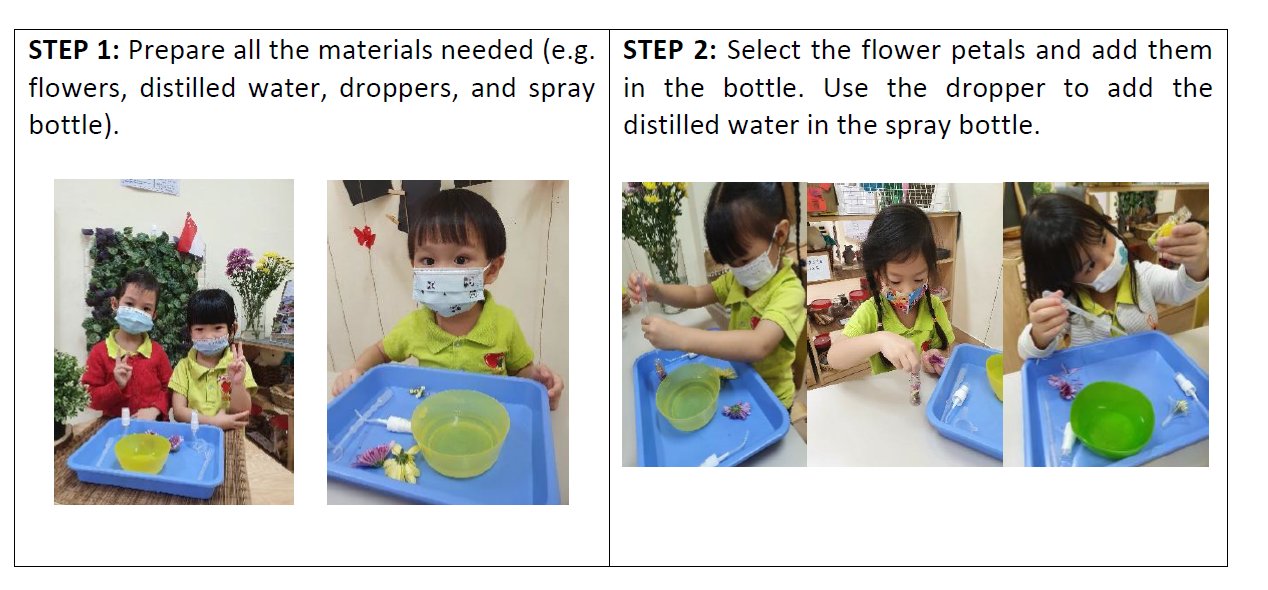
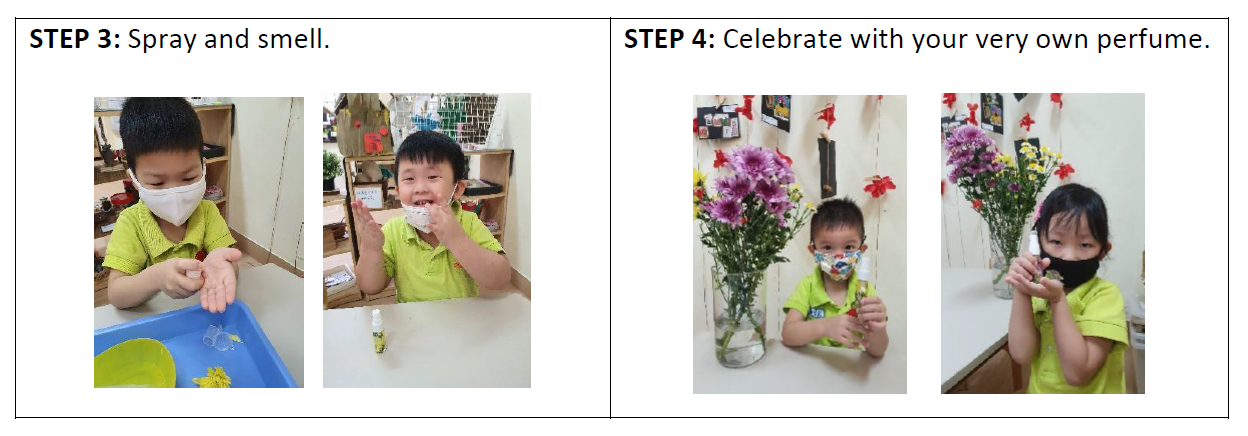
DISCUSS
The teacher provided the following guiding questions to promote children’s thinking in the “Discuss” phase:
• How did you make your perfume? What did you find easy/difficult? Why?
• What are you going to name your perfume? Why did you choose this name?
• How did you feel after making the perfume? What made you feel that way?
The children had a brief discussion with their peers and took turns to share their experiences. Each of them presented their proud creation to the class and went on to suggest a unique name for their signature scent (e.g. Blast Perfume, Flower Perfume and Sweet Perfume). The sharing generated many positive responses from the children as they listened attentively to each other’s presentation.
REFLECT
As part of the perfume-making process, the children were required to keep the perfume bottles sealed in school for 2 days. Although the children were disappointed that they could not bring the perfume home immediately, they understood the need to keep their perfume bottles in school after the teacher explained that this would allow the scent to become stronger.
After 2 days, the children took out the perfume bottle to spray and smell again. The children were asked to think back and compare the smell of the perfume. To their surprise, they found that the sweet scent of the perfume grew stronger and the scent lingered for a longer time. The teacher explained that by allowing the petals to sit for a longer time in the sealed spray bottle, the sweet scent from the petals could diffuse better into the distilled water. Following the explanation, the teacher invited the children to share what they have learnt. Most of the children reflected that they learnt that using different flowers in the perfume would generate different scents and it felt great to be able to personally create something for their loved ones.
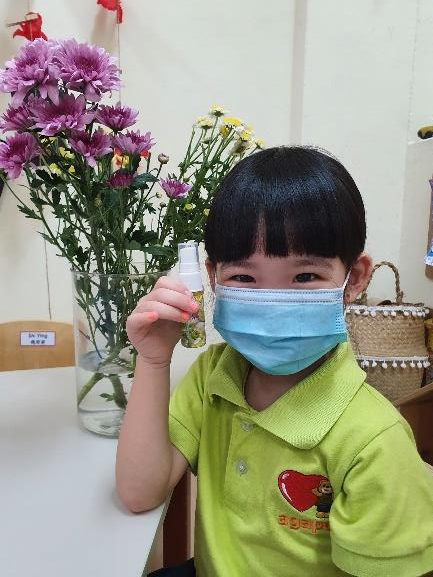
The smell is stronger now. My mommy will love this perfume.
- Shi Ying
The children brought the perfume home and presented it as a token of appreciation to their mother.
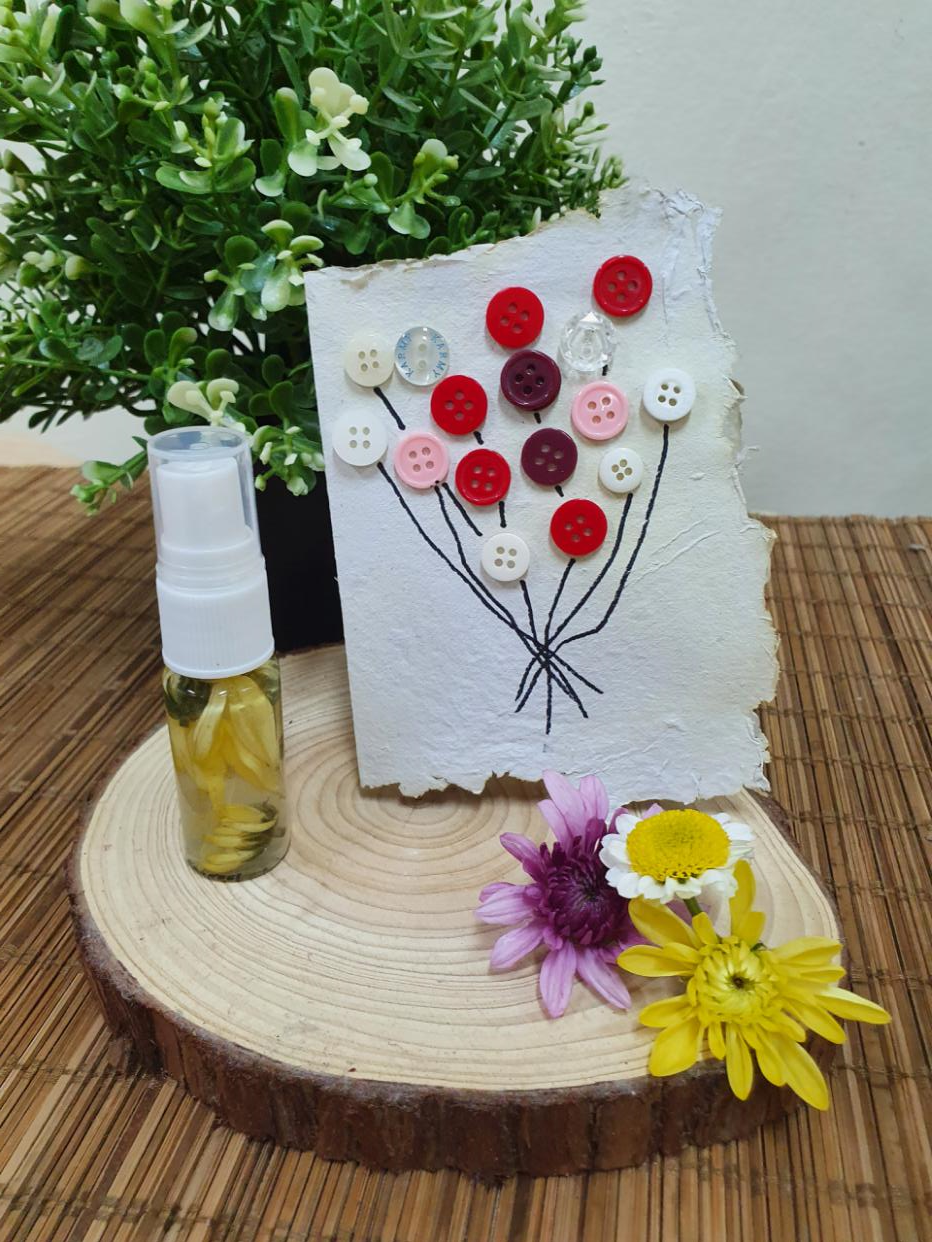
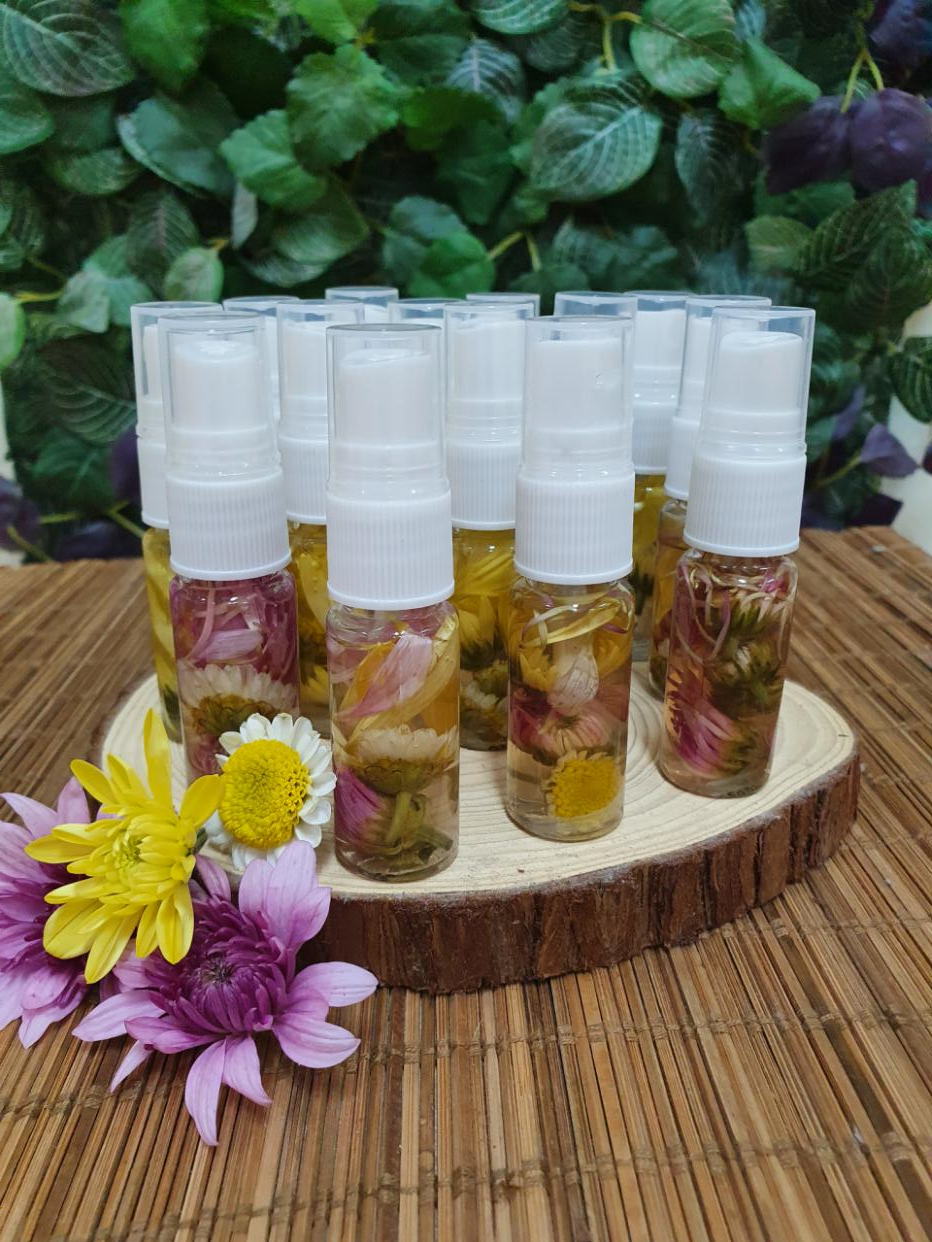
Conclusion
This activity provided an opportunity for the children to explore natural materials through their senses, in particular, their sense of smell. The teacher scaffolded children’s learning by helping them to make meaningful connections between their interest and new learning experience through an inquiry-based learning approach. Not only did the children explore the use of flowers in perfume-making through the hands-on activity, they were able to create a meaningful gift for their mothers in celebration of Mother’s Day.
Contributed by:
Ms. Jessica Papio
Ms. Sher Ming
Mrs. Mohan (Principal)
N2 Agape @CCK 789